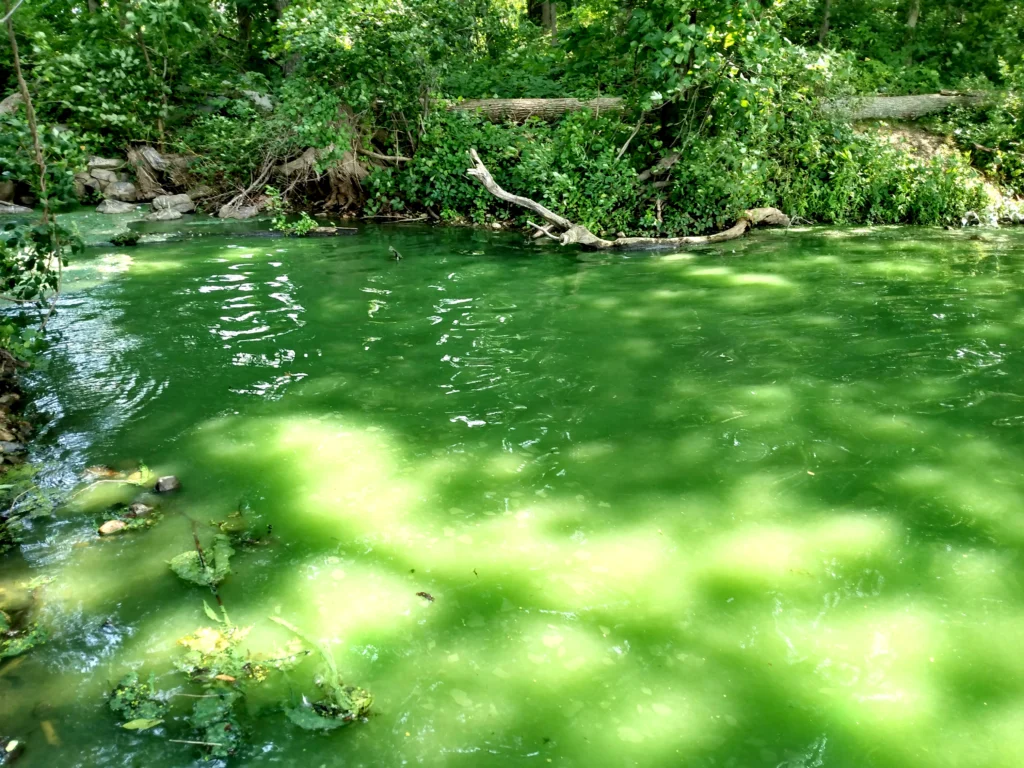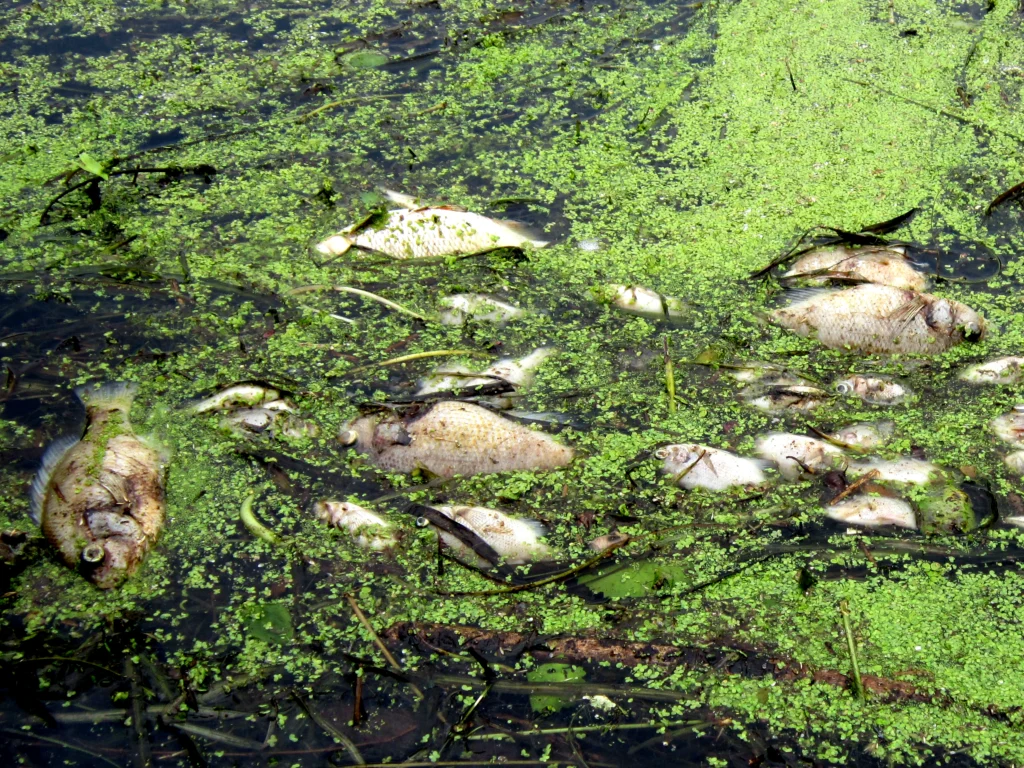Changing Climate, Changing Watershed
June 20, 2025
OARS River Log | By Zoe Green, Volunteer Eoglogical Restoration Writer | Published June 20, 2025
As a result of a warming climate, Massachusetts is experiencing more intense and frequent rainfall events, which can lead to flash floods and river flooding. In New England, regional annual precipitation amounts have increased at a rate of over 1 inch per decade since the late 1800s (UMass Amherst, 2017). Warmer winters also mean less snow and more rain throughout the year. When it is not cold enough for snow to accumulate, the snow that does accumulate tends to melt more rapidly in the spring, which can cause abrupt increases in river flows, leading to potential flooding and an overall increase in stormwater accumulation.
In addition to the damage to infrastructure and the surrounding environment that flood events can cause, an increase in stormwater runoff poses a significant problem, particularly for our local freshwater systems.
Dangers of Stormwater Runoff
When rainwater hits the ground, its “goal” is to end up in the closest body of water as it flows from highest to lowest elevation. On its way to the ocean, lakes, and rivers, as it flows over land, stormwater picks up various pollutants, including fertilizers, pesticides, oil, and bacteria. When these pollutants are carried into freshwater they can impact the health of aquatic life and create harmful algal blooms that disrupt the ecosystem.
The Ecological Impact of Algal Blooms

When carried into freshwater by runoff, fertilizers and other materials used for lawn or plant growth are particularly harmful because they contain large concentrations of nutrients like nitrogen and phosphorus. Just as they promote plant growth on land, so do they in the water, and when high amounts of these nutrients are introduced into a freshwater system they create what are called algal blooms, a rapid and large quantity of algae growth. This harms the ecosystem for a number of reasons. These blooms can quickly spread to cover the water’s surface, blocking sunlight from reaching underwater plants, which prevents them from photosynthesizing and often causes them to die. When the algae naturally die, they sink and are broken down by bacteria in an oxygen-intensive process. The more algal growth in a freshwater system, the more aerobic (oxygen-using) decomposers there are, which makes the demand for oxygen in the ecosystem high. A higher demand for oxygen makes it more difficult for organisms like fish to survive. This oxygen depletion, called hypoxia, creates “dead zones” in the water where most aquatic life cannot survive. This process of oversaturating water with nutrients, causing excessive algae growth and death of aquatic organisms, is known as eutrophication; it can severely disrupt the balance of aquatic ecosystems and harm water quality.

Stormwater Runoff and Impervious Surfaces
Impervious surfaces are man-made hard surfaces that prevent water from infiltrating the ground and instead cause water to run off the surface, increasing runoff into our rivers. Surfaces made of concrete and asphalt such as, for example, roads, sidewalks, driveways, parking lots, and rooftops are all impervious surfaces. In a natural environment, rain typically falls on more permeable, or porous surfaces that allow rainwater to percolate into the soil when it hits the ground. When stormwater can flow through the ground, it allows for nutrient removal and retention, the processing of chemical and organic materials, and the reduction of the sediment load into the watershed. This is because natural permeable surfaces hold onto water long enough to allow the sediments and pollutants to settle out before they hit the freshwater system. By contrast, impervious surfaces drastically increase runoff over a shorter period, meaning that, when it rains, a larger portion of that water goes into the watershed at a faster pace, and carries with it all of the accumulated pollutants straight into our freshwater.
As aforementioned, particular nutrients from fertilizers, manure, or sewage can enter waterways through stormwater runoff and become a major driver of algal blooms in our watershed. Two common nutrients that cause problems are nitrogen and phosphorus. Phosphorus usually comes from fertilizers, animal waste, or eroded soil and attaches to sediment particles. In water, even small amounts can cause explosive algae growth. Nitrogen from fertilizers, manure, or sewage, enters water as nitrate (NO₃⁻), which dissolves easily in water. As essential nutrients for algae growth, nitrogen and phosphorus commonly cause these harmful algal blooms.
However, nature has its own way of taking care of these nutrients. When stormwater passes through porous surfaces such as soil, the nutrients are able to be processed naturally.
Stormwater Runoff and Porous Surfaces
For example, bacteria found in low-oxygen, wet conditions (such as marshes and wetlands) convert nitrate (NO₃⁻)—the form of nitrogen most commonly found in fertilizers—into nitrogen gas (N₂)—a harmless gas that makes up most of our atmosphere, effectively removing nitrate from the water system. In drier soil conditions, nitrogen can also be transformed into ammonium (NH₄⁺), which binds to soil particles and absorbs into the soil, significantly reducing the amount of nitrogen that gets into water. Similarly, phosphorus sticks tightly to soil minerals, causing the phosphorus to be “trapped” in the soil. Wetland plants and soil vegetation use nitrogen and phosphorus to grow as well, storing the nutrients in the plants on land before they reach the water, which also limits these nutrient concentrations in runoff.
Riparian zones, marshes, and wetlands are essential to freshwater health as they slow water down, letting phosphorus and nitrogen-carrying sediments and water settle out before it can flow downstream.
SAVING OUR WATERSHED
Stormwater Utility Charge
A stormwater utility charge is a fee assessed by municipalities to fund the management of stormwater runoff, a fee typically assessed according to the amount of impervious surface on a property and collected into a dedicated fund for operating, maintaining, and improving stormwater infrastructure, such as pipes, drains, and treatment facilities.
While most municipalities in the Sudbury-Assabet-Concord (SuAsCo) watershed area have stormwater management systems, including permitting and regulations, only three are currently documented to have implemented stormwater utility charges. Towns like Lincoln have one-time fees paid by developers or property owners applying for permits for specific projects like new construction, but Westborough, Hudson, and Concord have an ongoing fee, typically billed quarterly or annually, assessed according to the impervious area of a property. The town of Concord has established a stormwater utility enterprise fund and offers credits for approved stormwater management activities to encourage property owners to minimize their impact on the stormwater system.
Community Solution for Stormwater Management
Because they directly affect our watershed, we must protect our local wetlands. Currently, Concord, MA has nine identified wetland cores as part of its natural resource conservation efforts. (Town of Concord, 2025), three rain gardens, which are man-made landscape features that also work to naturally filter stormwater runoff, and culverts, which are structures that allow stormwater runoff to flow under roads or other infrastructure instead of flooding over the surface.

